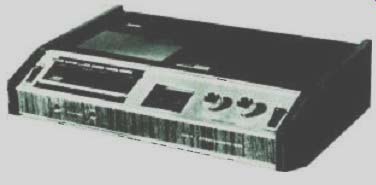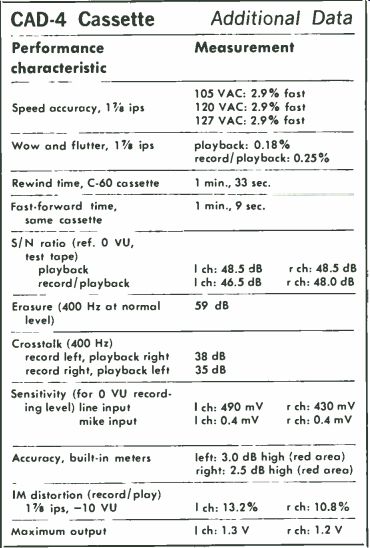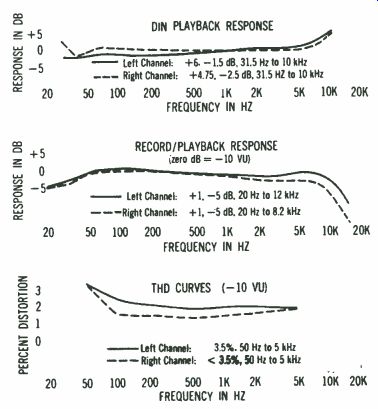
H-K'S Worthy New Cassette Recorder
THE EQUIPMENT: Harman-Kardon CAD-4, a cassette tape recorder deck (transport with built-in recording/ playback preamps).
Dimensions: 12 3/4 by 3 3/8 inches.
Price: $159.50. Manufacturer: Harman-Kardon, Inc., 55 Ames Court, Plainview, N.Y. 11803.
COMMENT: The kind of response we get from today's best cassette machines running at 1 7/8 ips is comparable to the response we expected not too long ago from the better open-reel decks running at twice that speed-and, of course, costing much more than a cassette model. And also weighing more, taking up much more space, and a bit too complicated for the average, nontechnical user. But here come the cassette recorders: compact, reasonably priced, simple to operate, and surprisingly good in performance.
Harman-Kardon's entry into this burgeoning field is a neatly styled, walnut-encased model designed to be jacked into an external sound system through which it can play and from which it can accept signals to be recorded. The unit also has standard mike jack inputs for live recording. As is true of all cassette machines tested to date, the CAD-4 uses two tape heads-one for erase, and one for record /playback.
A standard cassette fits into the slot on the upper left-hand side of the unit where it is automatically engaged by the capstan and pinch roller and the pair of spindles that turn the internal hubs. Just above the slot, there's a three-digit tape counter with reset button. Operating controls, arranged on the sloping front portion of the set, include a rocker switch for stereo /mono mode, and six press-to-use buttons for recording, rewind, stop /eject, play /record, fast forward, and pause. Next to these are twin VU meters, followed by respective channel A and B recording-level knobs, and finally the power off /on rocker switch. The first recording button represents a safety feature (it must be pressed together with the record/ play button to do your own recording) that prevents accidental erasure of recorded tapes. Below the control buttons a panel lights up, as appropriate, to show the legends "Record" (when recording), "Motor" (when the motor is running), and "Overload" (for too strong a recording signal). The mike jacks are found on the front apron; the line inputs and outputs, and the unit's power cord are at the rear.
Because it is a new product form, the cassette recorder in general has not yet set clear-cut performance goals vis-à-vis cost. Be that as it may, the CAD-4 strikes us as being right up there with the best that the cassette technology has offered so far. Its performance characteristics are more than reasonably good tor a cassette model; indeed, they begin to suggest comparison with larger open-reel decks rather than with the petite cassette format.
Using the CAD-4 is both simple and enjoyable. Its playback of commercial (pre-recorded) cassettes is second to none, and it may surprise you with its ability to make its own recordings. Aside from some inevitable hiss and a sense of less ultimate clarity in the highs, cassette tapes dubbed on the CAD-4 from other program sources sound surprisingly like the originals. If you're bothered by the slight difference in the upper midrange response between left and right channels, a slight advance of the right-channel treble knob on your system amplifier will bring it all into balance. Chances are, however, you'll not notice any imbalance on most material.

------------ CAD-4 Cassette Additional Data

------------- DIN PLAYBACK RESPONSE
-------------
(High Fidelity)
Also see:
Ferrograph 724 tape recorder (Equip. Report, Jan. 1970)
Stanton Model 881S phono cartridge (Equip. Report, Nov. 1977)